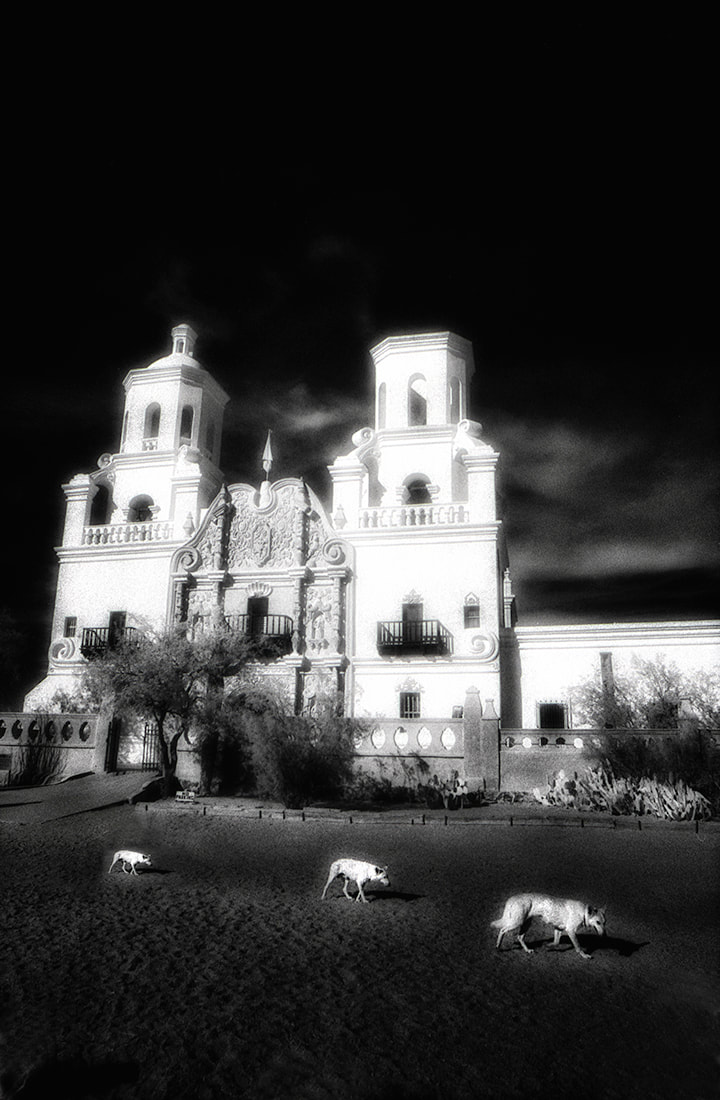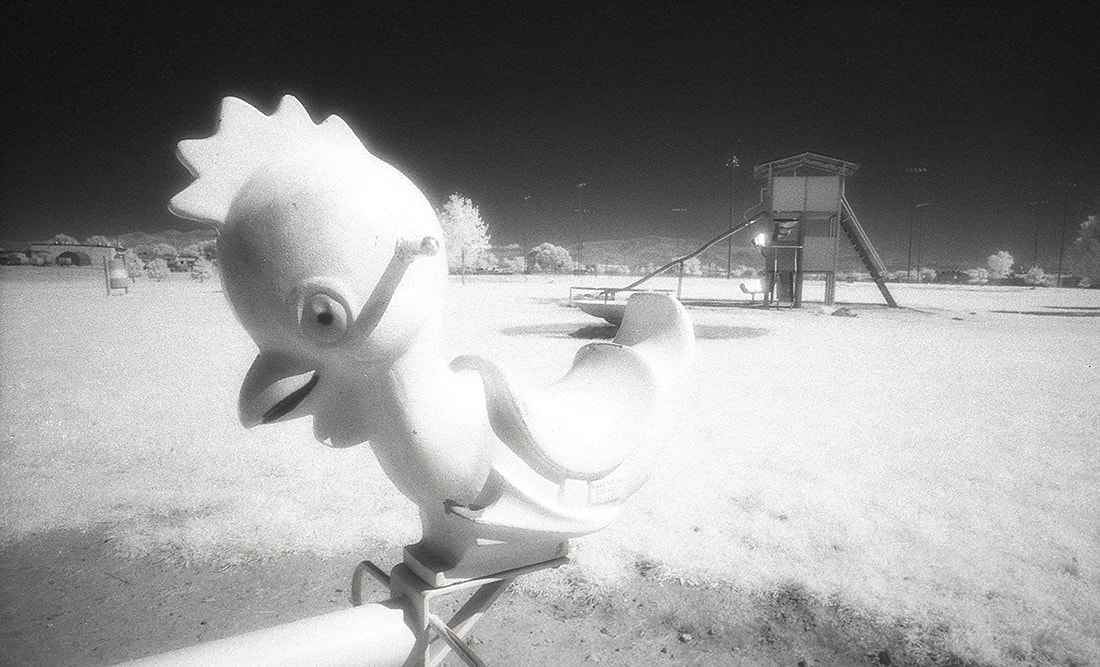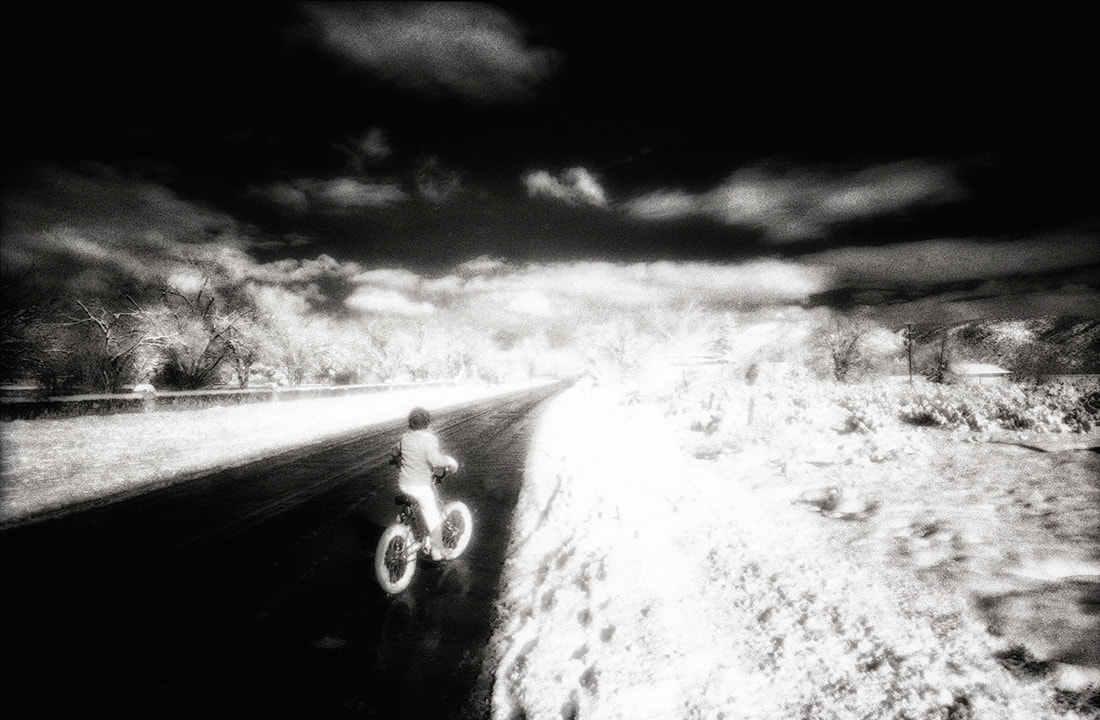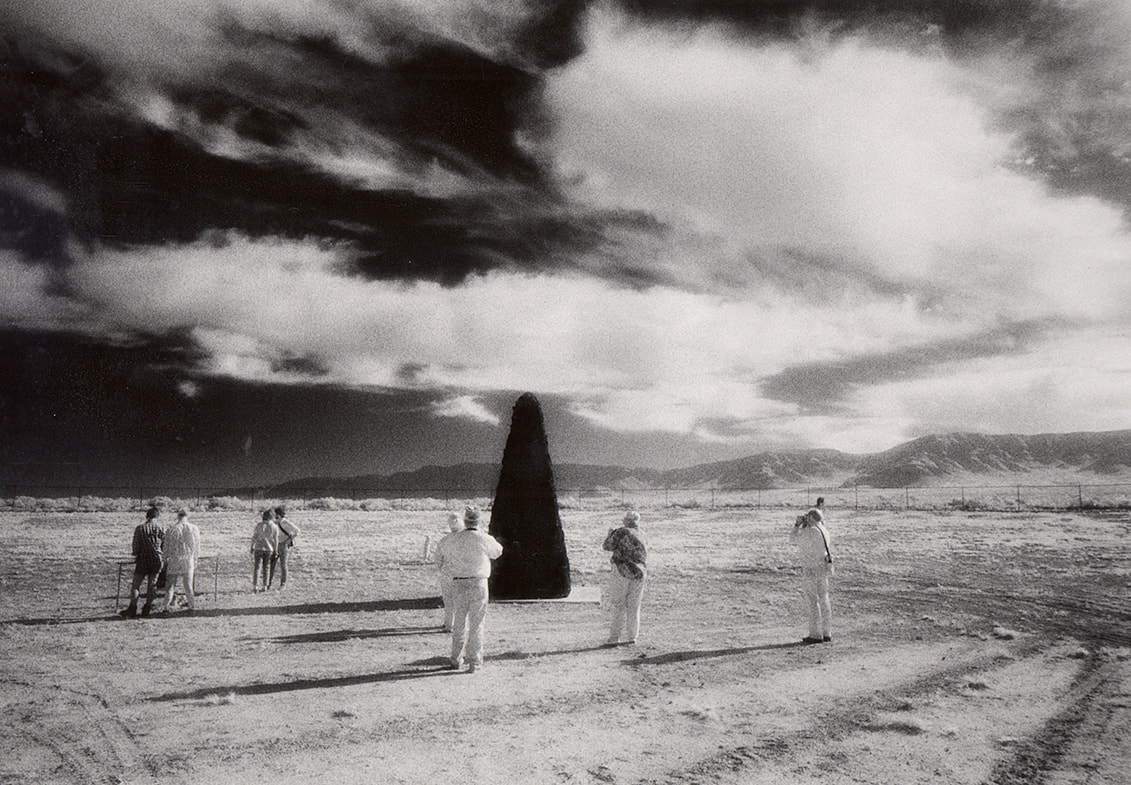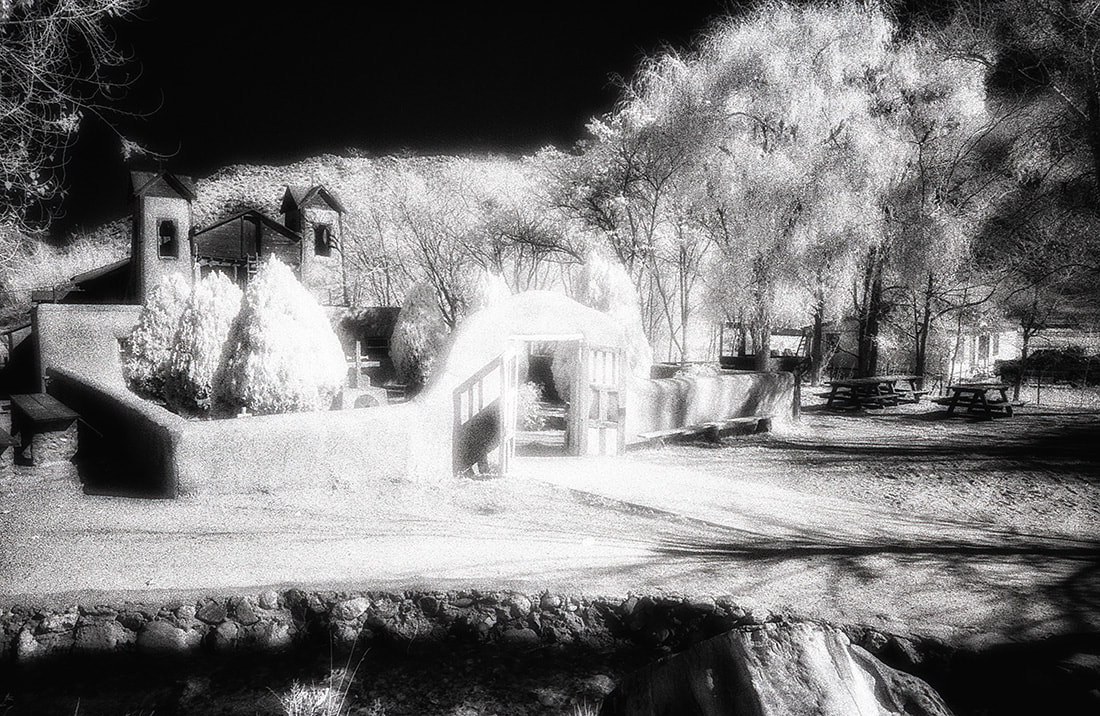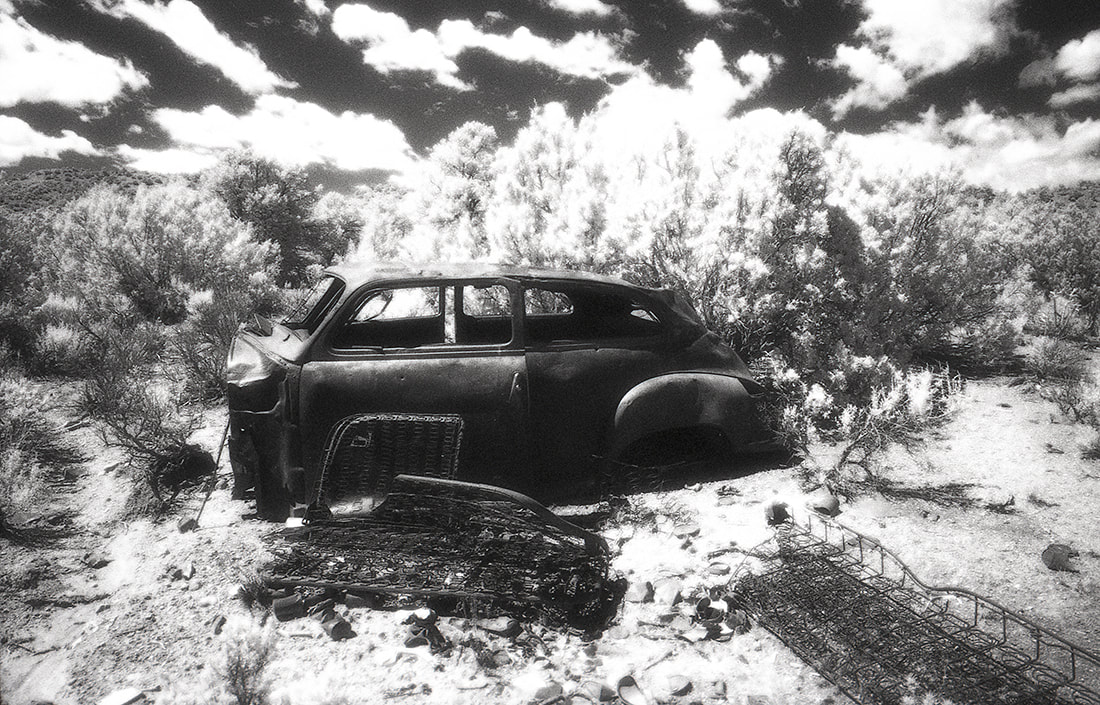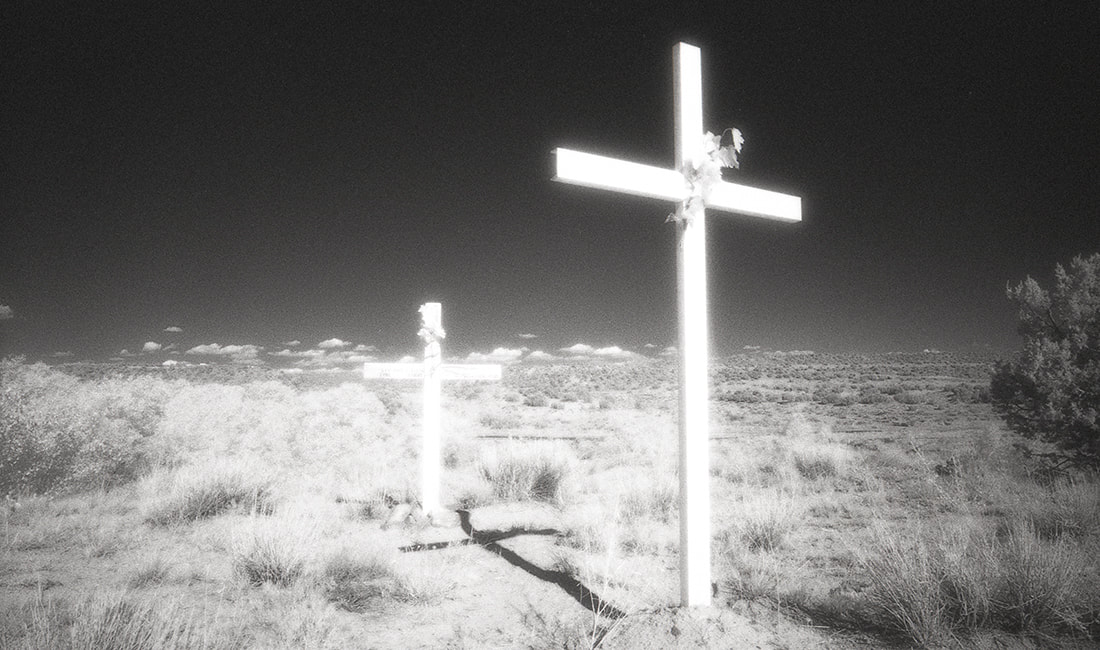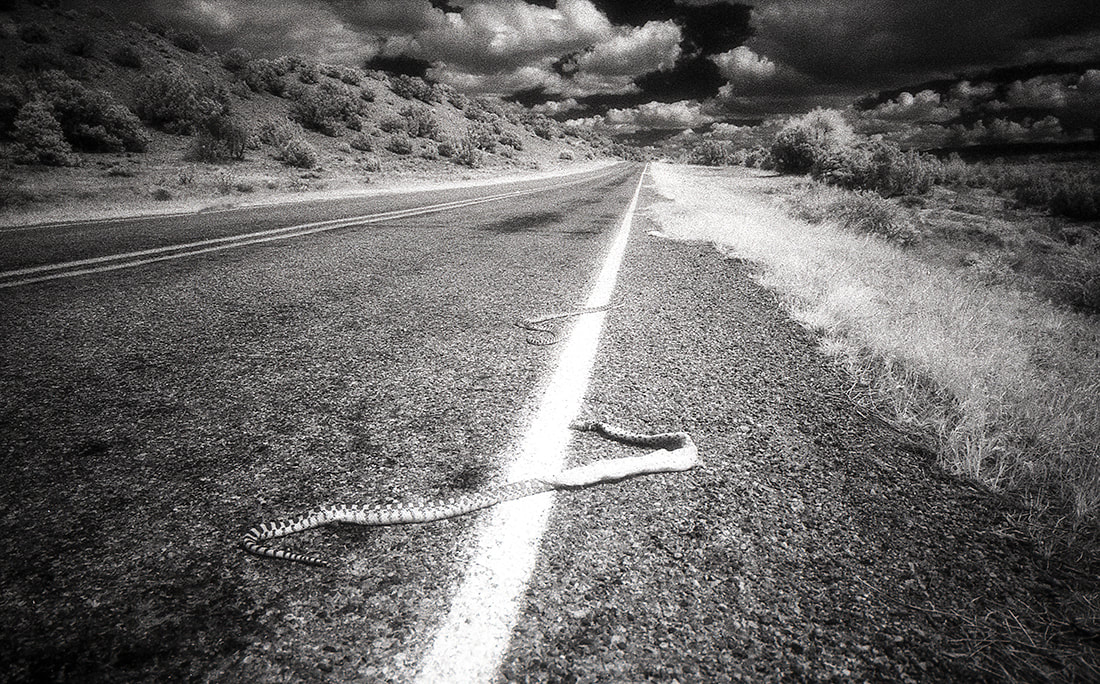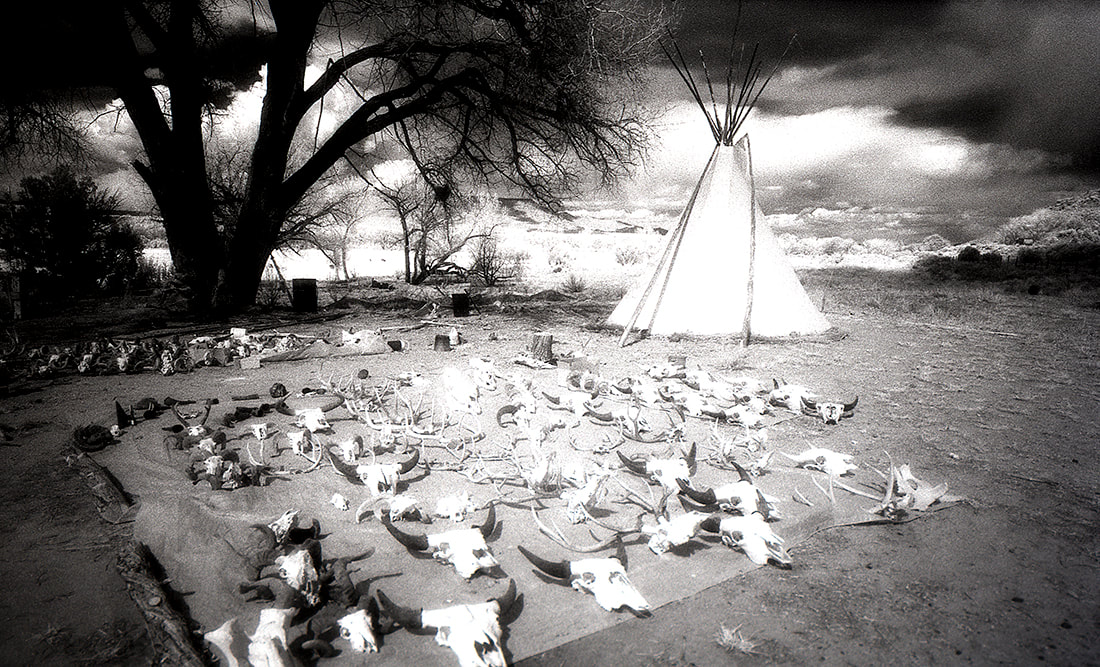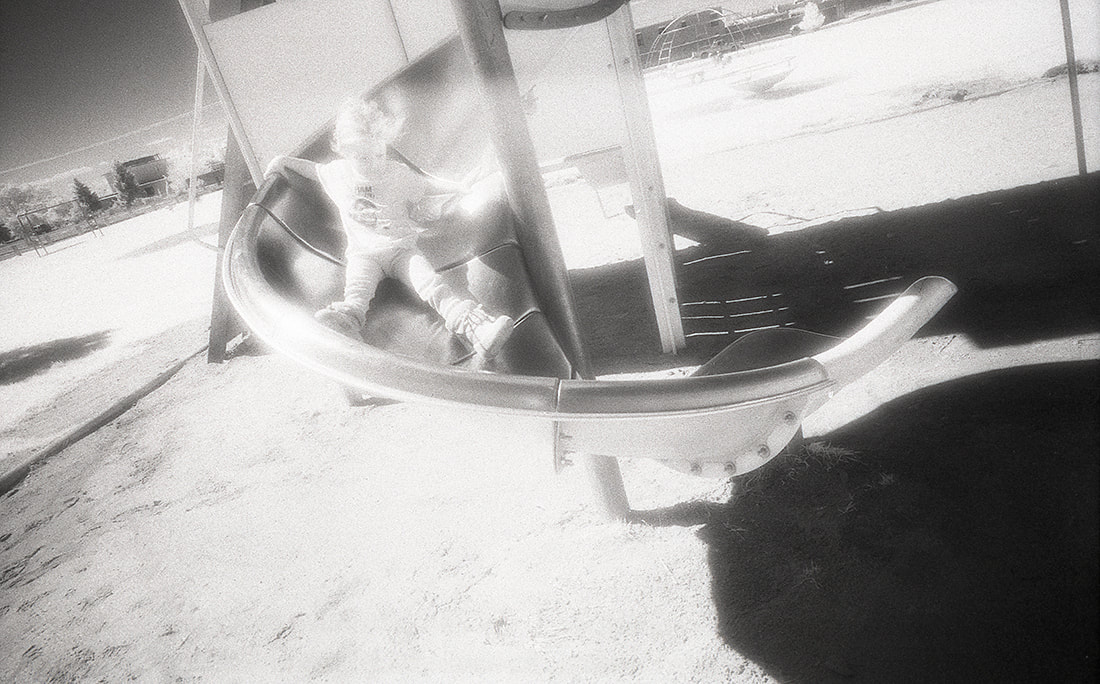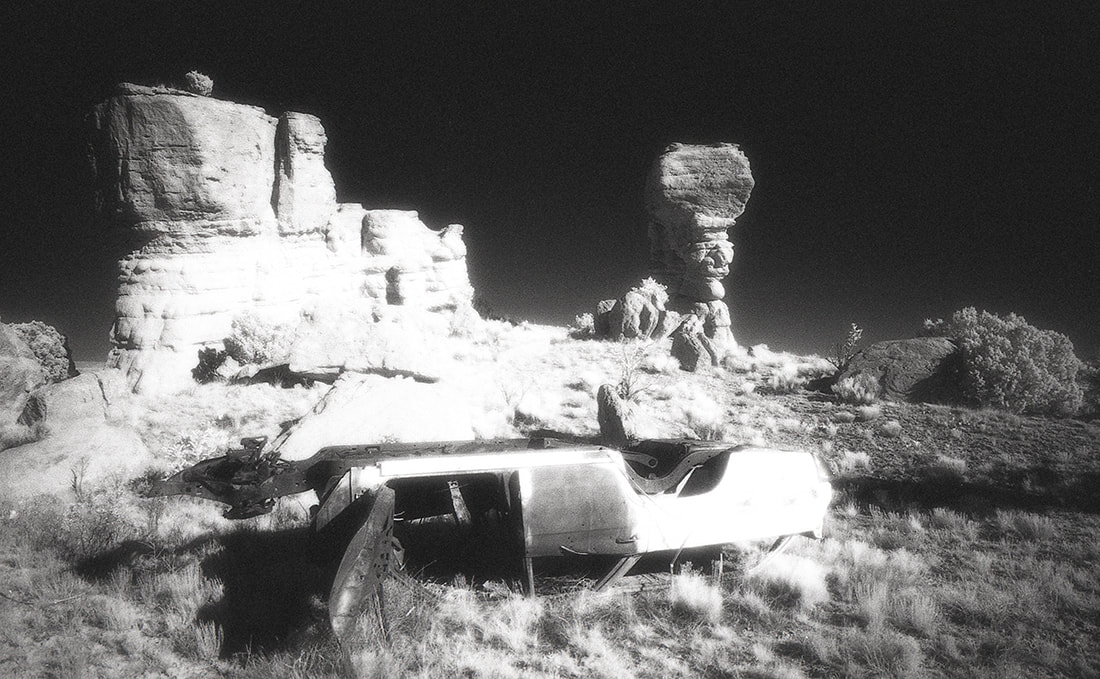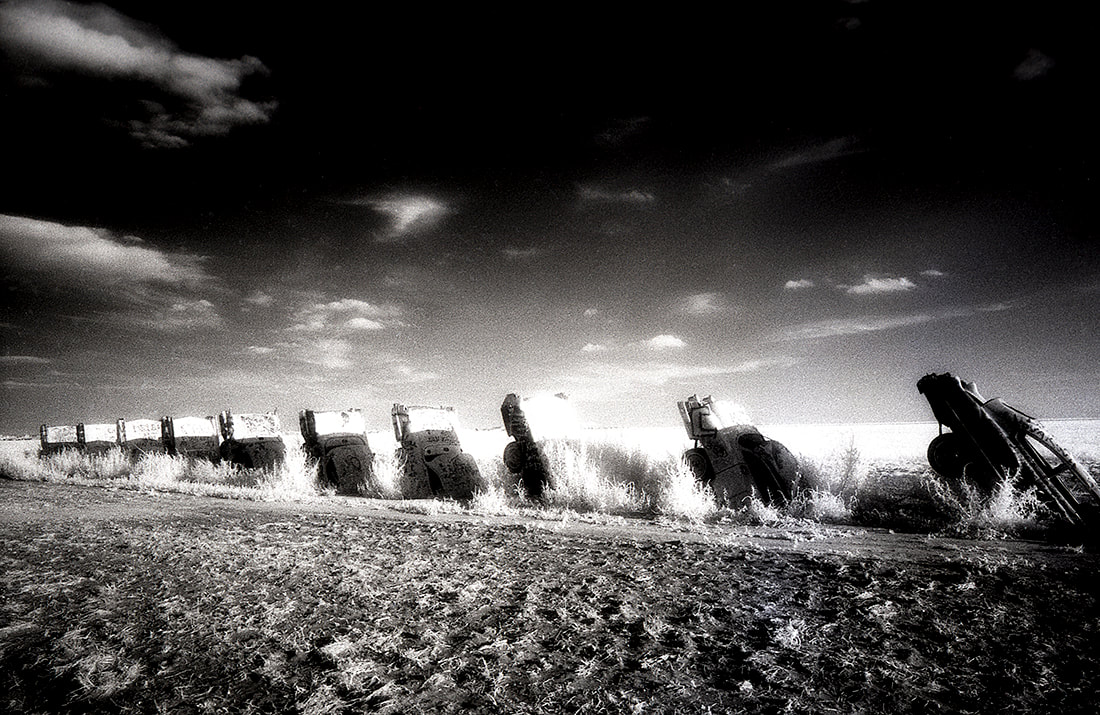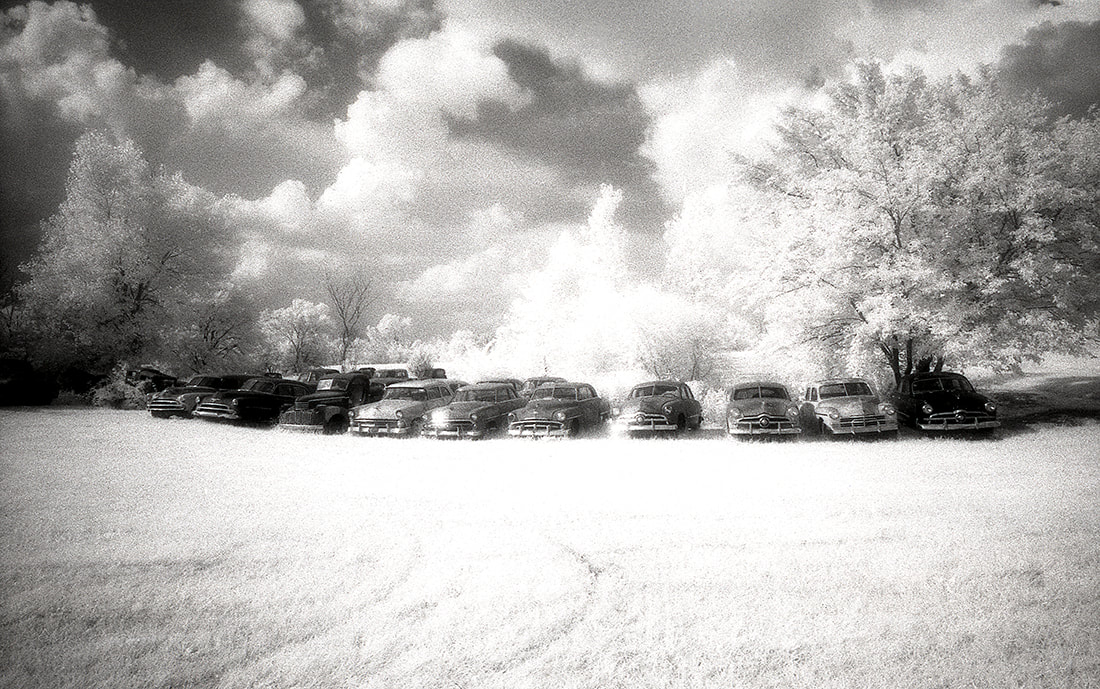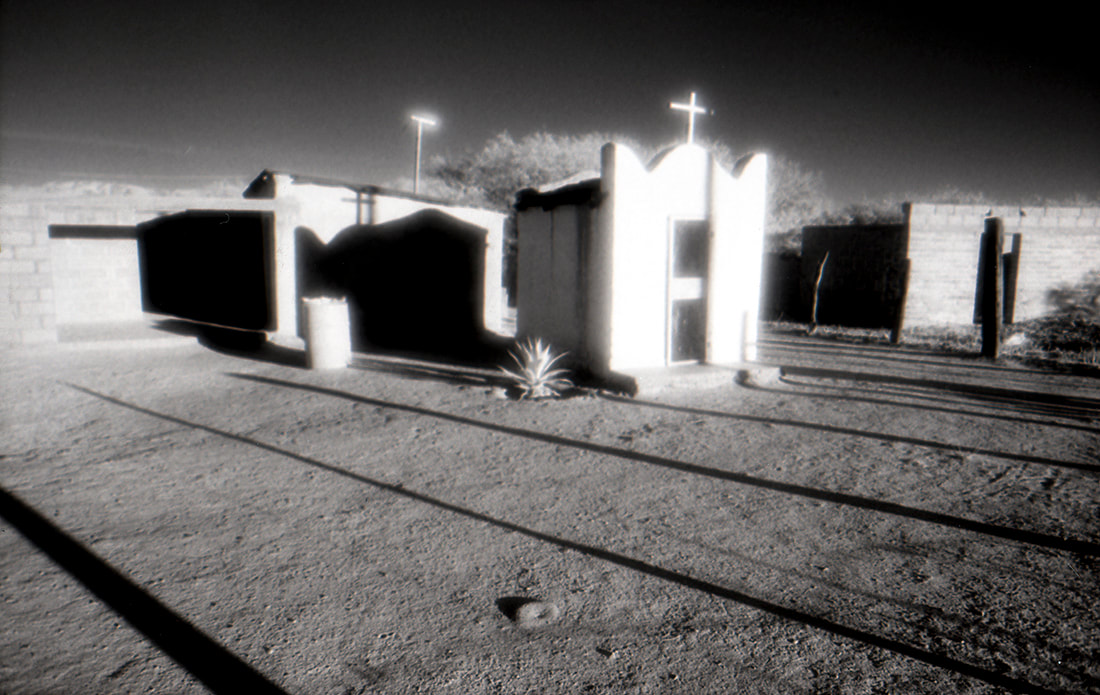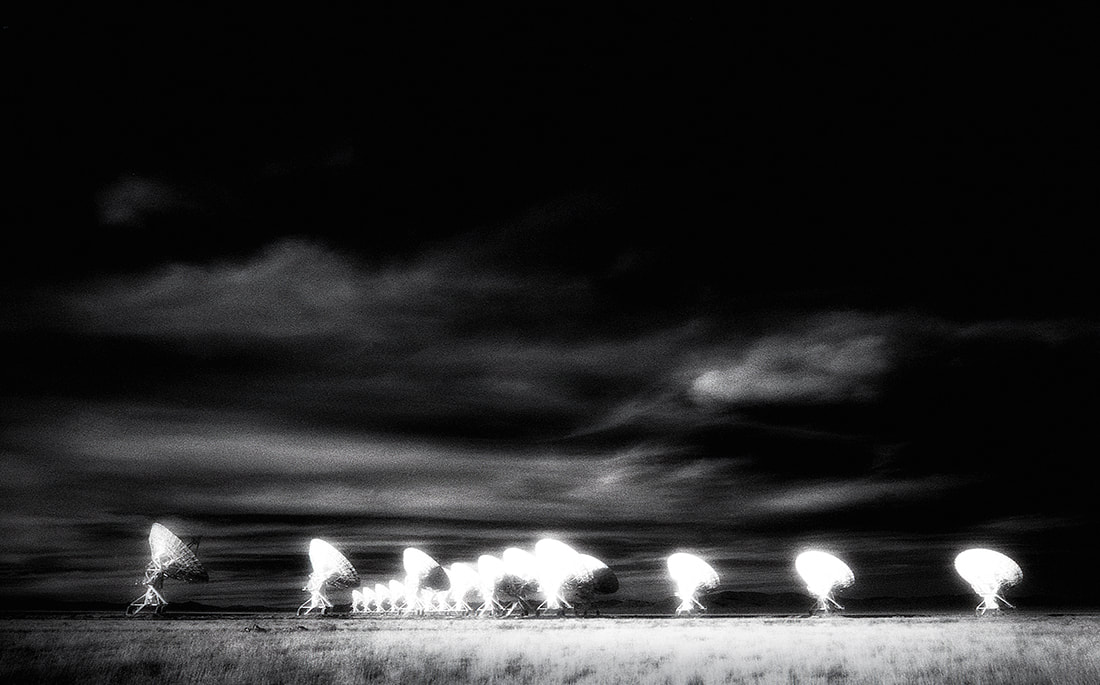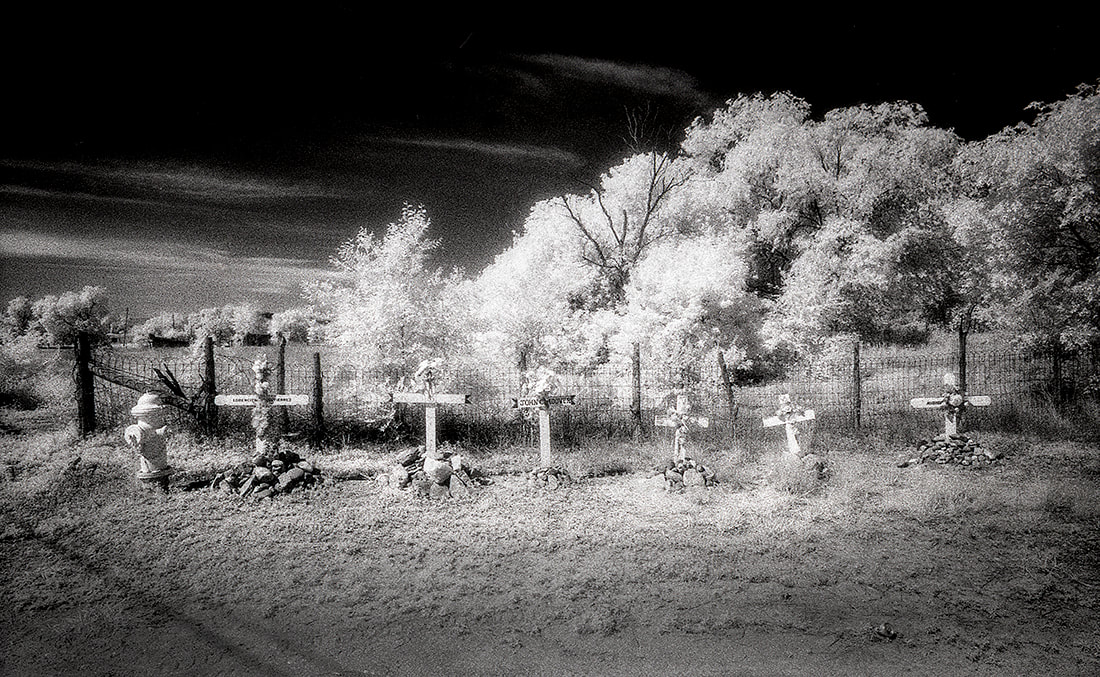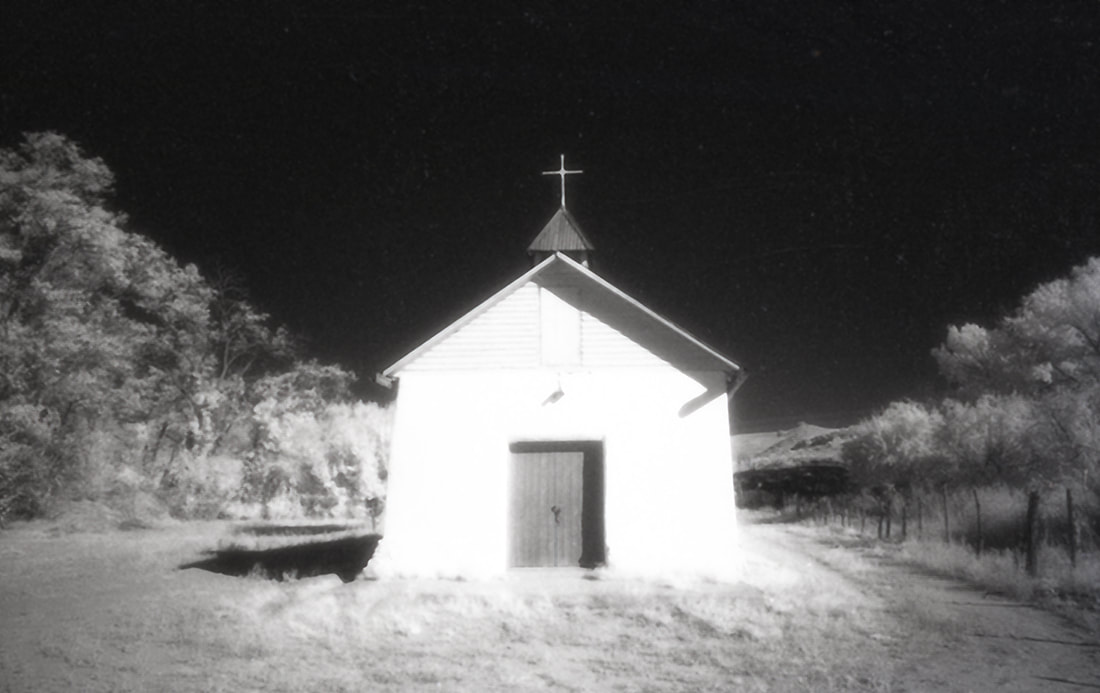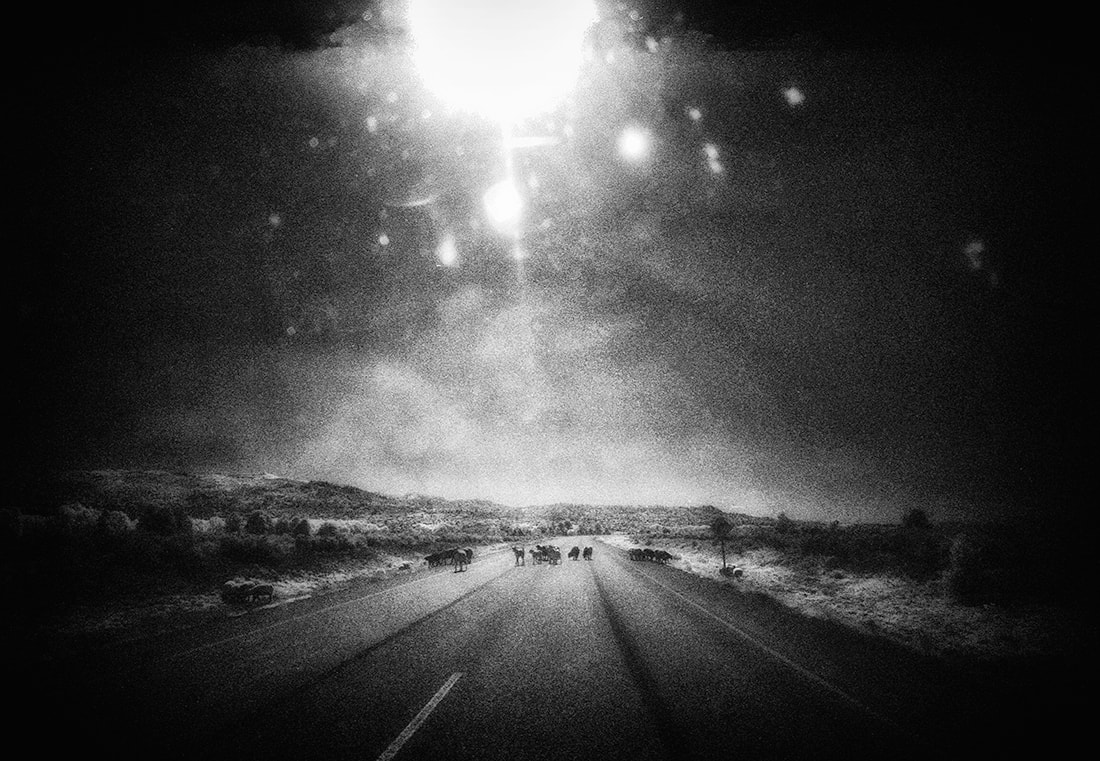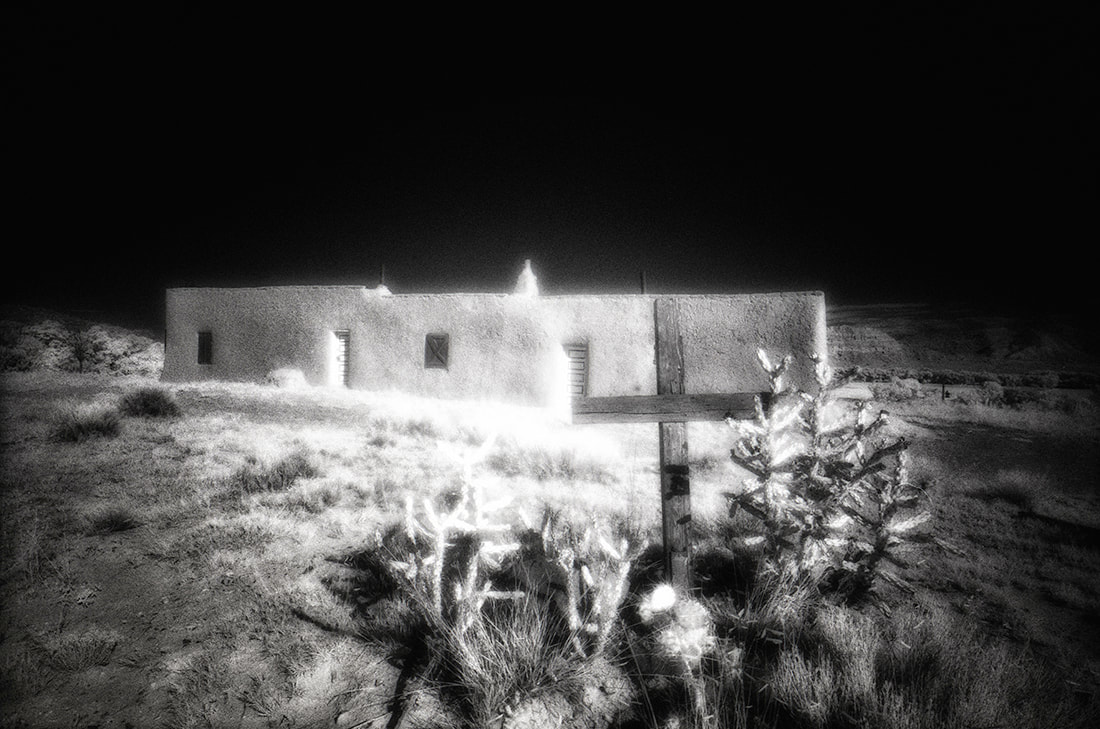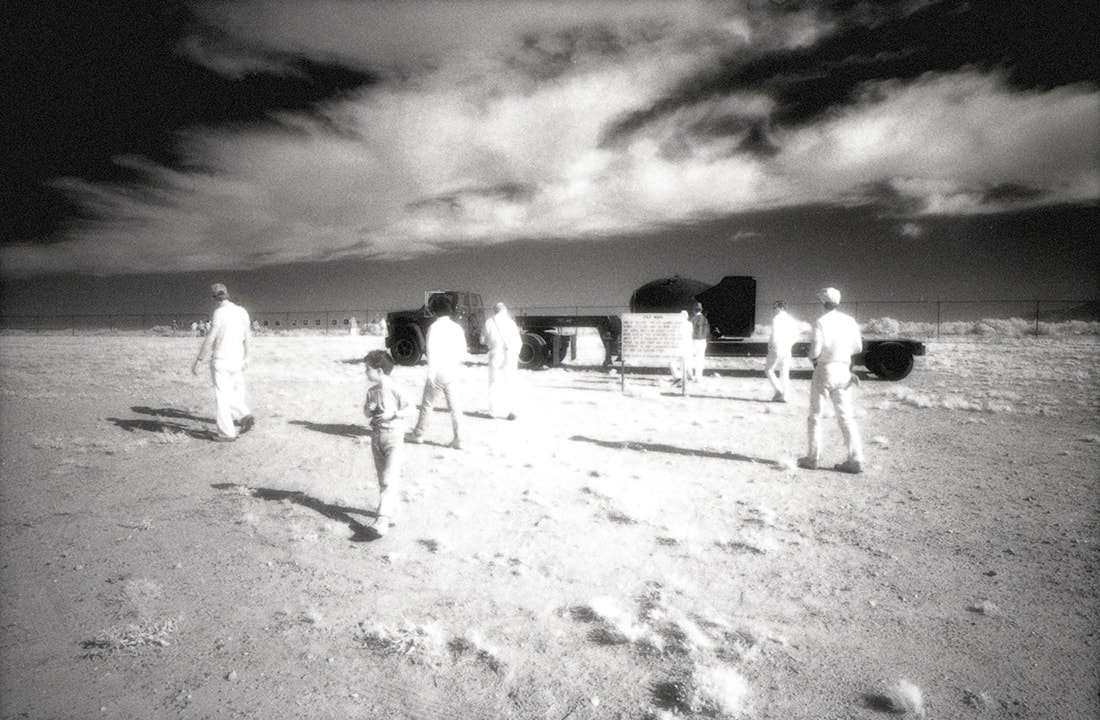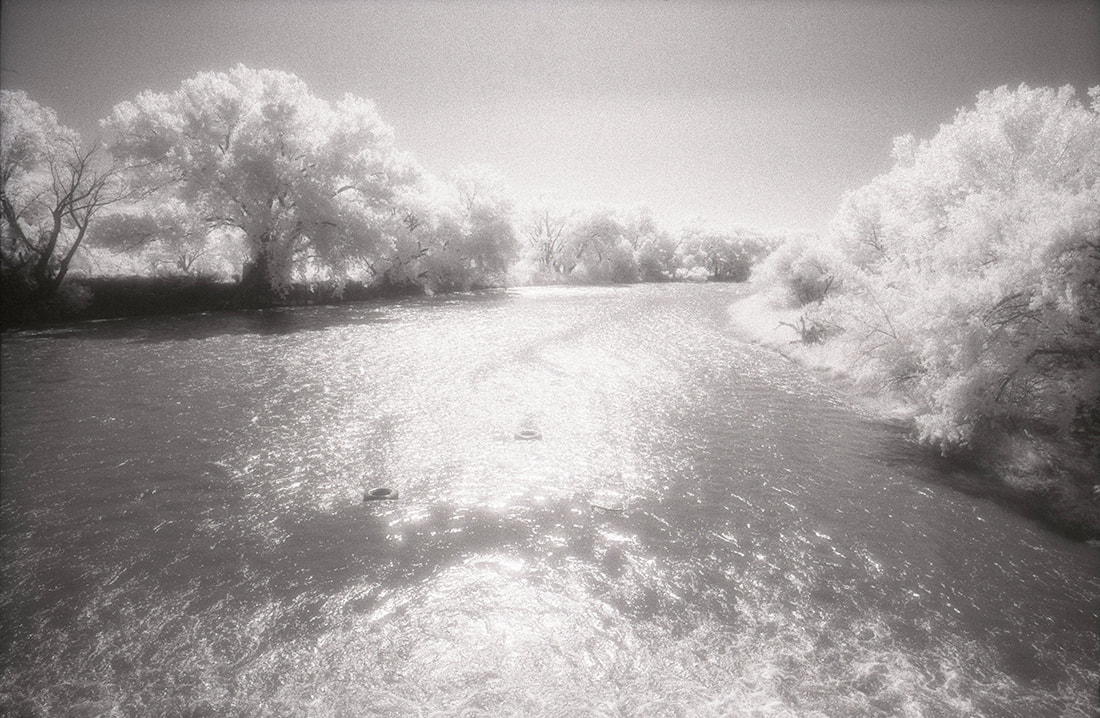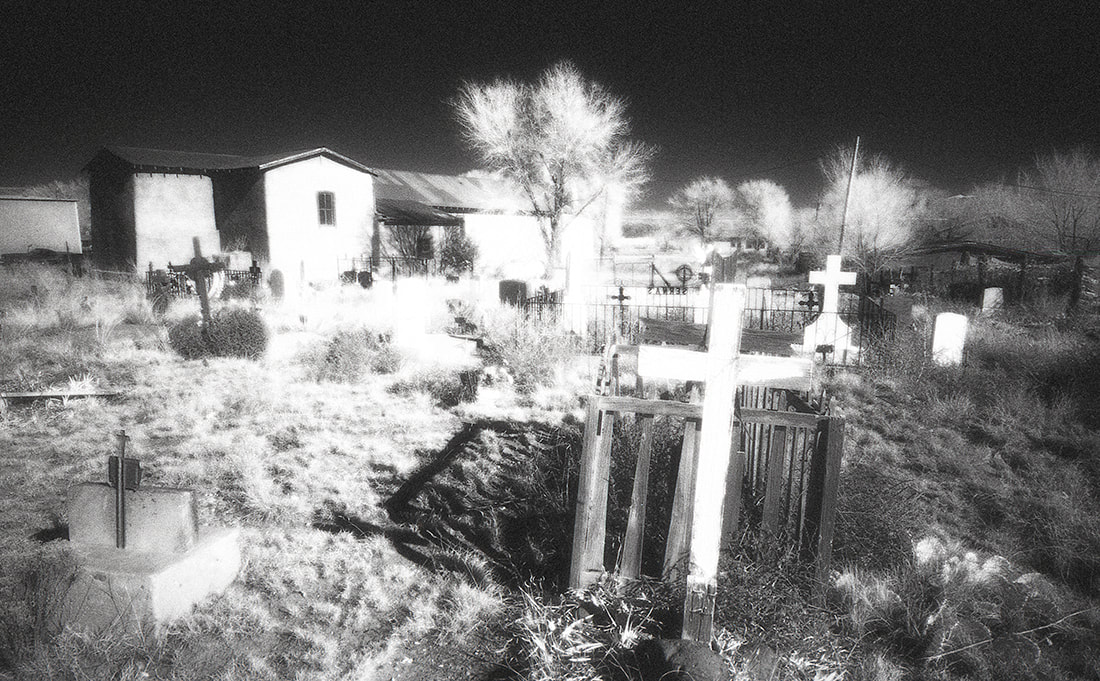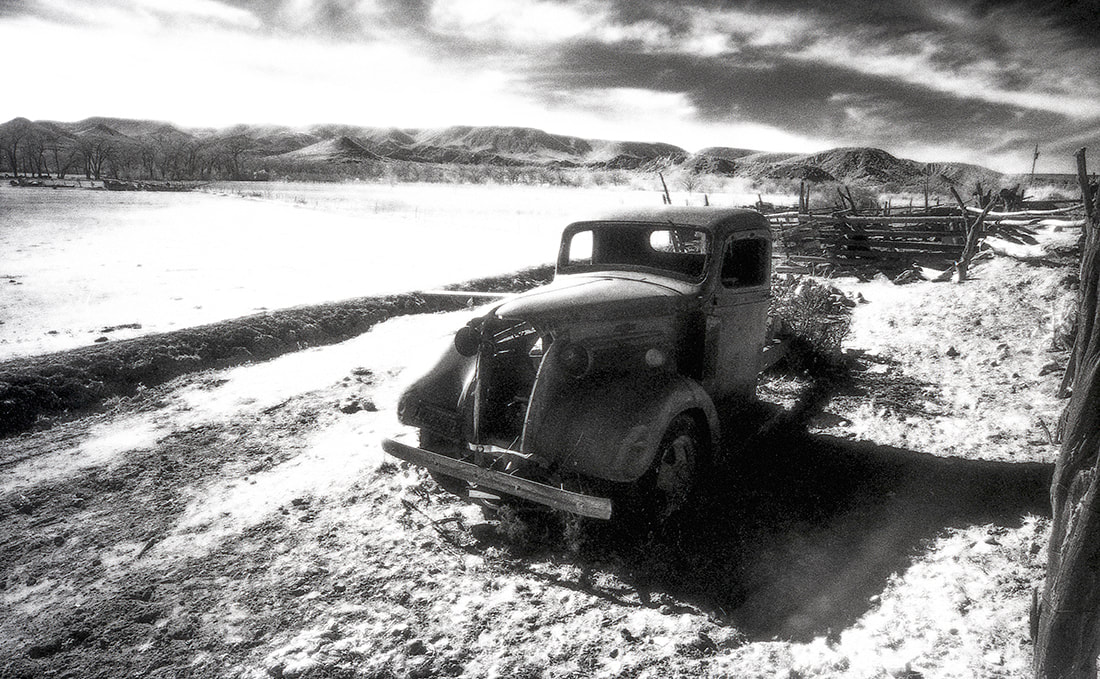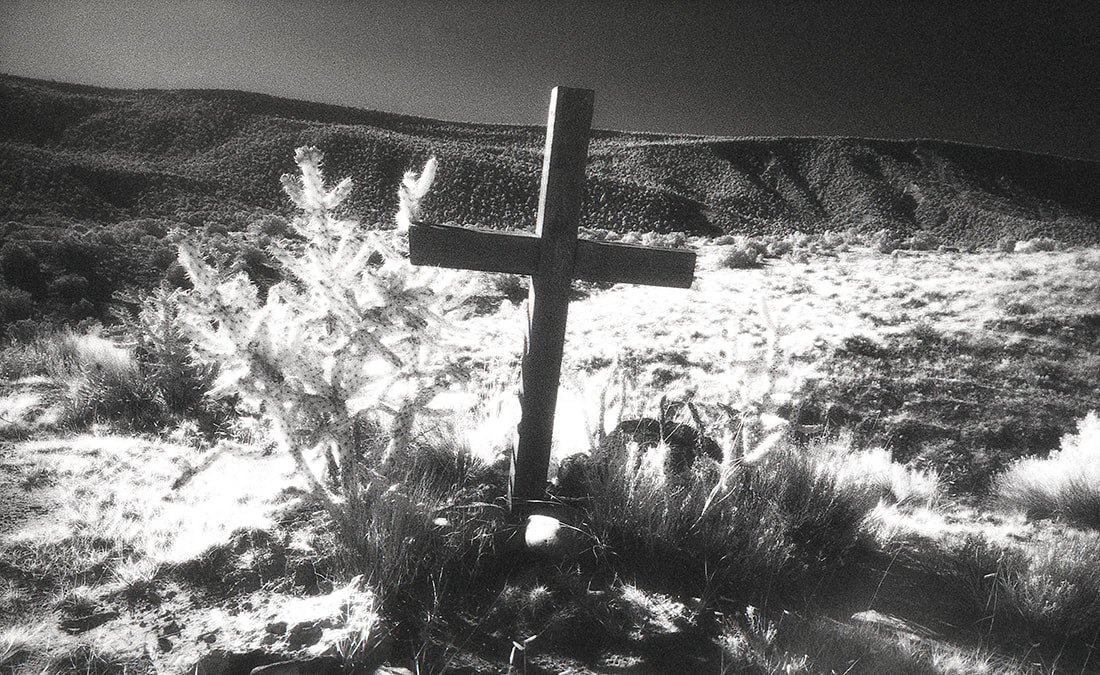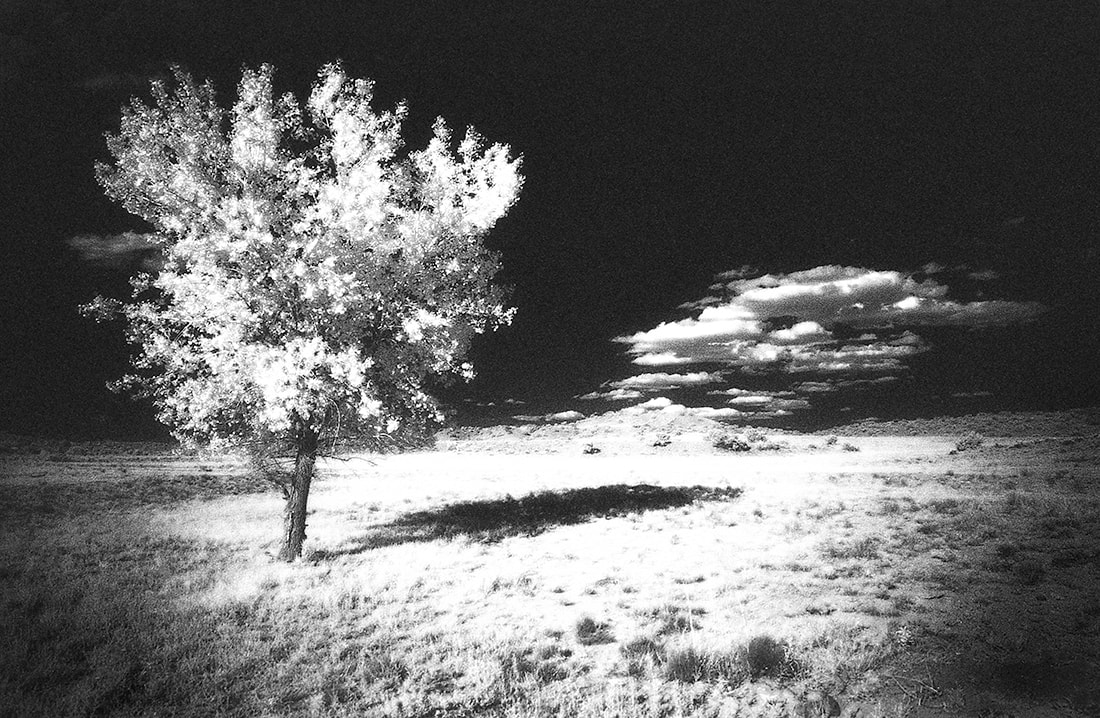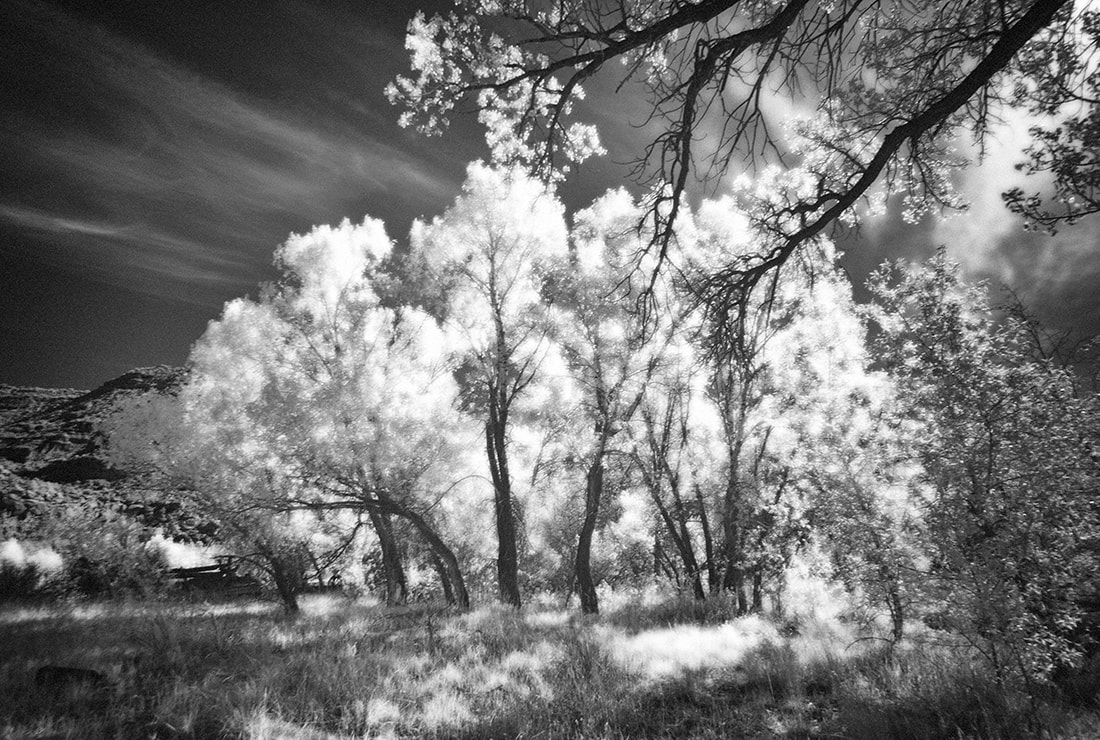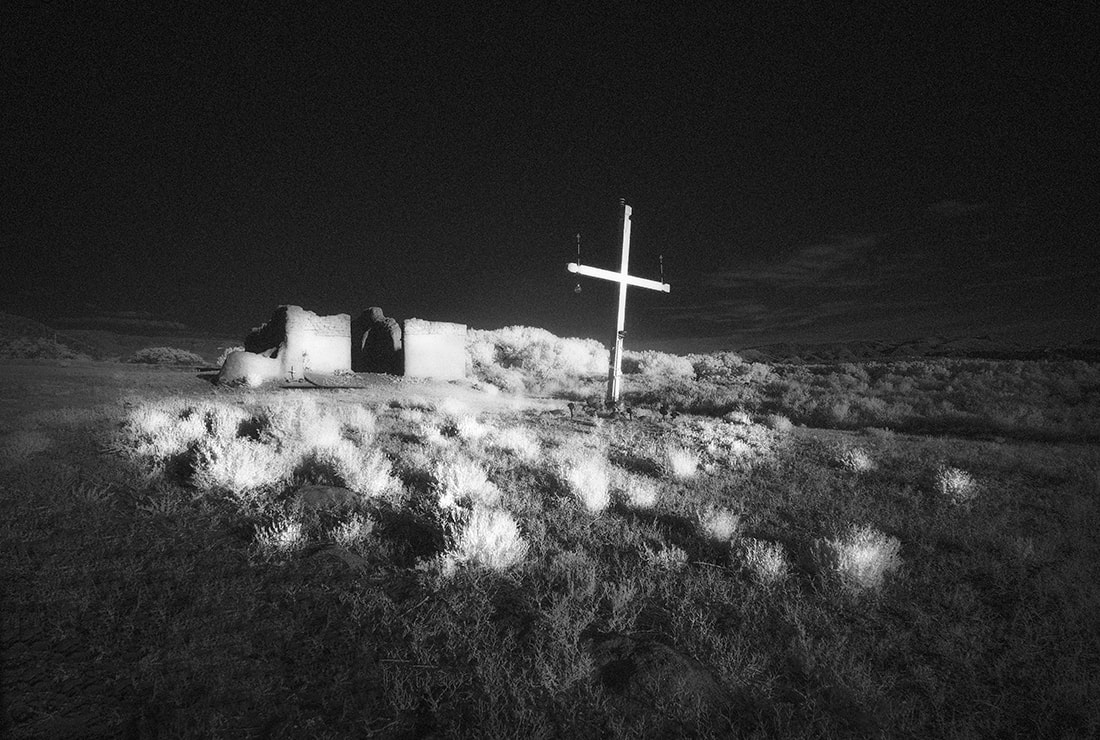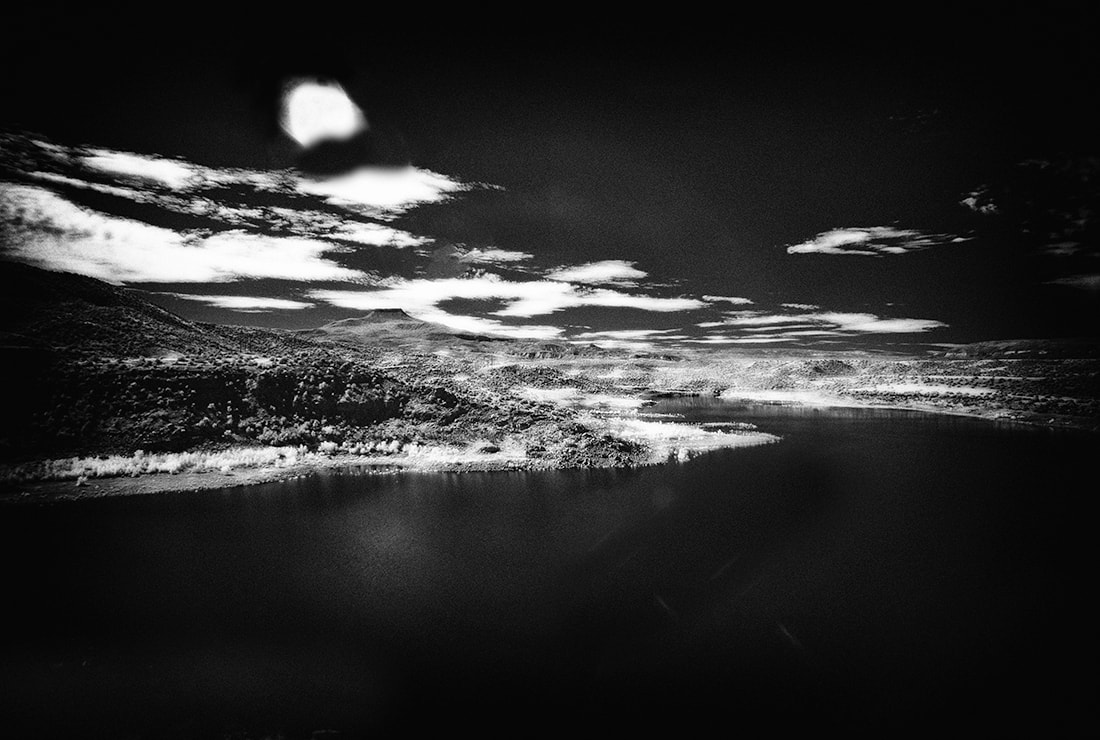Infrared Photos
This is one of my favorite infrared film images. Driving to Mexico, I was about 10 miles south of Tucson, Arizona, when I came to the Tohono O’odham Nation San Xavier Indian Reservation and the Mission San Xavier del Bac. I was taking photos of the famous mission where normally a lot of visitors are in attendance. This was an unusual day where very few people were around. I had just about finished and was ready to leave when these three dogs were passing by creating a surreal-looking tableau.
I’ve got a page on my website that touches on timing and luck in photography, and these three dogs, almost mysteriously appearing before me out of nowhere, and as quickly as they had appeared, disappeared – pfff - convinced me that luck often plays a part in creating a successful photo along with quick reflexes of the photographer.
I’ve got a page on my website that touches on timing and luck in photography, and these three dogs, almost mysteriously appearing before me out of nowhere, and as quickly as they had appeared, disappeared – pfff - convinced me that luck often plays a part in creating a successful photo along with quick reflexes of the photographer.
Playground, Santa Fe, New Mexico, Kodak infrared film
When I was shooting film almost exclusively, I always had one of my Leicas loaded with infrared. The Leica was a perfect camera for infrared because it was a rangefinder. When I would attach an IR filter (it was opaque so one couldn’t see through it and it passed only IR light waves) to the lens, I wasn’t looking through the lens as I would have if I had been using a single lens reflex camera, so it was easy to compose and focus. With an SLR the photographer would have to remove his or her IR filter from the lens, compose and focus, and then reattach the filter onto the lens to actually take a photo.
I’ve always liked high contrast images in the style of English photographer Bill Brandt, they have a gritty, dramatic look, so using black and white infrared film takes that style to another level.
There are numerous ways to use a digital camera to take infrared photos, and I have tried a number of them, but I still prefer the look of infrared film. It is subjective no doubt. It might be like those people who insist that vinyl records are the only way to listen to an album. There is some intangible aspect of a film infrared image that is tantalizing to me, although it’s hard to put into words.
Some of that may be the, somewhat, unpredictability of film. With a digital camera you can look at the LCD screen and see the effects before taking the photo. I always enjoyed the mystery and surprise of using a film camera. Naturally, as I got more adept at using infrared film, I got better at predicting results, but there were still times when the film and subject would surprise me.
Using infrared was like being able to step into a surrealistic landscape. There was a dreamlike quality to the images. Foliage would change dramatically. The sky would normally be extremely black. And the whites would often be bright or even washed out, with a hazy, glowing, halo-like effect that appealed to me greatly — and still does.
When I would go out with my film cameras, I always had regular black and white film along with color loaded into two other bodies along with the Leica with the infrared. As I have been looking through my film archives, I realized I used the infrared rather sparingly. I didn’t’ automatically shoot a few infrared frames while I was also shooting Tri-X or HP5 or Kodachrome.
There are a few recurring themes in my infrared work: abandoned cars, descansos (roadside crosses) and one that revolved around playground equipment from an earlier age. When I would take trips for photographic assignments, I would often stop at city parks in small towns, and they often still had pre-plastic playground toys for the children such as strange, giant, metal chickens or metal rocket ships that looked like they could have been used as props in the Flash Gordon TV series. There were giant, undulating slides. There were merry-go-rounds that are getting rarer and rarer as time goes on. These vintage playground toys were made in the same era as some of the flashy cars being produced at the time, with giant fins and chrome galore — cost be damned. There were toys that Raymond Loewy, the designer who might be called “The Father of Streamline Design,” would have appreciated.
The park toys seemed particularly perfect for infrared, making them seem magical or mystical, something you might imagine being the subject of a child’s dreams, or something out of movie director Tim Burton’s fantasies.
I’ve always liked high contrast images in the style of English photographer Bill Brandt, they have a gritty, dramatic look, so using black and white infrared film takes that style to another level.
There are numerous ways to use a digital camera to take infrared photos, and I have tried a number of them, but I still prefer the look of infrared film. It is subjective no doubt. It might be like those people who insist that vinyl records are the only way to listen to an album. There is some intangible aspect of a film infrared image that is tantalizing to me, although it’s hard to put into words.
Some of that may be the, somewhat, unpredictability of film. With a digital camera you can look at the LCD screen and see the effects before taking the photo. I always enjoyed the mystery and surprise of using a film camera. Naturally, as I got more adept at using infrared film, I got better at predicting results, but there were still times when the film and subject would surprise me.
Using infrared was like being able to step into a surrealistic landscape. There was a dreamlike quality to the images. Foliage would change dramatically. The sky would normally be extremely black. And the whites would often be bright or even washed out, with a hazy, glowing, halo-like effect that appealed to me greatly — and still does.
When I would go out with my film cameras, I always had regular black and white film along with color loaded into two other bodies along with the Leica with the infrared. As I have been looking through my film archives, I realized I used the infrared rather sparingly. I didn’t’ automatically shoot a few infrared frames while I was also shooting Tri-X or HP5 or Kodachrome.
There are a few recurring themes in my infrared work: abandoned cars, descansos (roadside crosses) and one that revolved around playground equipment from an earlier age. When I would take trips for photographic assignments, I would often stop at city parks in small towns, and they often still had pre-plastic playground toys for the children such as strange, giant, metal chickens or metal rocket ships that looked like they could have been used as props in the Flash Gordon TV series. There were giant, undulating slides. There were merry-go-rounds that are getting rarer and rarer as time goes on. These vintage playground toys were made in the same era as some of the flashy cars being produced at the time, with giant fins and chrome galore — cost be damned. There were toys that Raymond Loewy, the designer who might be called “The Father of Streamline Design,” would have appreciated.
The park toys seemed particularly perfect for infrared, making them seem magical or mystical, something you might imagine being the subject of a child’s dreams, or something out of movie director Tim Burton’s fantasies.
Boy rides bike with snowy landscape, El Rito, New Mexico,, Kodak infrared film
Trinity Site, the location of the first atomic bomb test, Alamagordo, New Mexico, Kodak infrared film
Santurario de Chimayo, Chimayo, New Mexico, Kodak infrared film
Abandoned car, Northern New Mexico, Kodak infrared film
Two roadside crosses (descansos), New Mexico, Kodak infrared film
Dead snakes on roadway between Abiquiu and El Rito, New Mexico, Kodak infrared film
Skulls for sale with tipi in background, Abiquiu, New Mexico, Kodak infrared film
Girl on playground slide, Santa Fe, New Mexico, Kodak infrared film
Abandoned car and land formations near El Rito, New Mexico, Kodak infrared film
Cadillac Ranch, Amarillo, Texas, Kodak infrared film
Row of vintage cars in agriculture field, Missouri, Kodak infrared film
Out buildings at the Mission San Xavier del Bac on the Tohono O’odham Nation San Xavier Indian Reservation about 10 miles south of Tucson, Arizona, Kodak infrared film
Very Large Array Radio Telescopes, New Mexico, Kodak infrared film
A row of roadside crosses (descansos), San Juan Pueblo, Northern New Mexico, Kodak infrared film
The Sangre de Cristo Chapel located in Cuarteles, New Mexico, Kodak infrared film
Goats on road with sunburst, Northern New Mexico, Kodak infrared film
Penitente morada, Abiquiu, New Mexico, Kodak infrared film
Trinity Site, Alamogordo, New Mexico, Kodak infrared film
Rio Chama, Chamita, New Mexico, Kodak infrared film
Small church cemetery, Northern New Mexico
Abandoned vintage pickup truck and agricultural field, Medanales, Northern New Mexico, Kodak infrared film
Roadside cross (descansos), Northern New Mexico, Kodak infrared film
Tree and clouds, New Mexico, Kodak infrared film
Digital Infrared Images
Although I prefer using infrared film, I have dabbled a bit into the digital infrared realm. Here are two digital images I have taken recently. I know there are a lot of photographers out there doing color infrared work, but I prefer black and white. I find the color garish and a bit too manipulated-looking, as if someone dialed up the saturation to its max in Photoshop.
Cottonwood trees, Coyote, New Mexico, digital infrared, Leica M8
Santa Rosa de Lima church ruins, Abiquiu, New Mexico. Santa Rosa de Lima was an early 18th-century Spanish settlement in the Rio Chama valley, near the present-day town of Abiquiú in Rio Arriba County, New Mexico. By the 1730s Spanish settlers were moving into the Chama River valley, and by 1744 at least 20 families were living in the present-day Abiquiú area, where they founded the Plaza de Santa Rosa de Lima. The church was built around 1744, and was in use until the 1930s. Repeated raids by Utes and Comanches caused the settlement to be abandoned in 1747. In 1750, the Spanish founded a new settlement at the present site of Abiquiú, about a mile from Santa Rosa de Lima. Digital infrared, Leica M8
Abiquiu Dam with Cerro Pedernal in rear, digital infrared, Leica M8
To contact Bob Eckert for assignments, consultations or workshops, please email [email protected]
or use the contact form on the About page
or use the contact form on the About page
